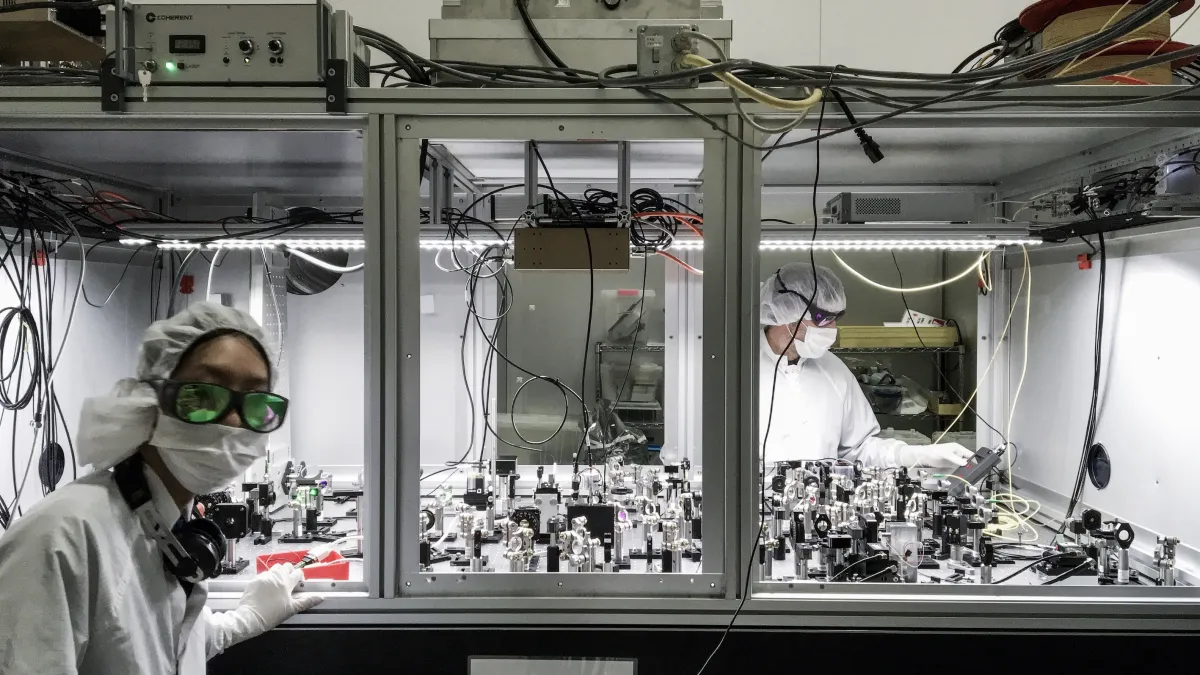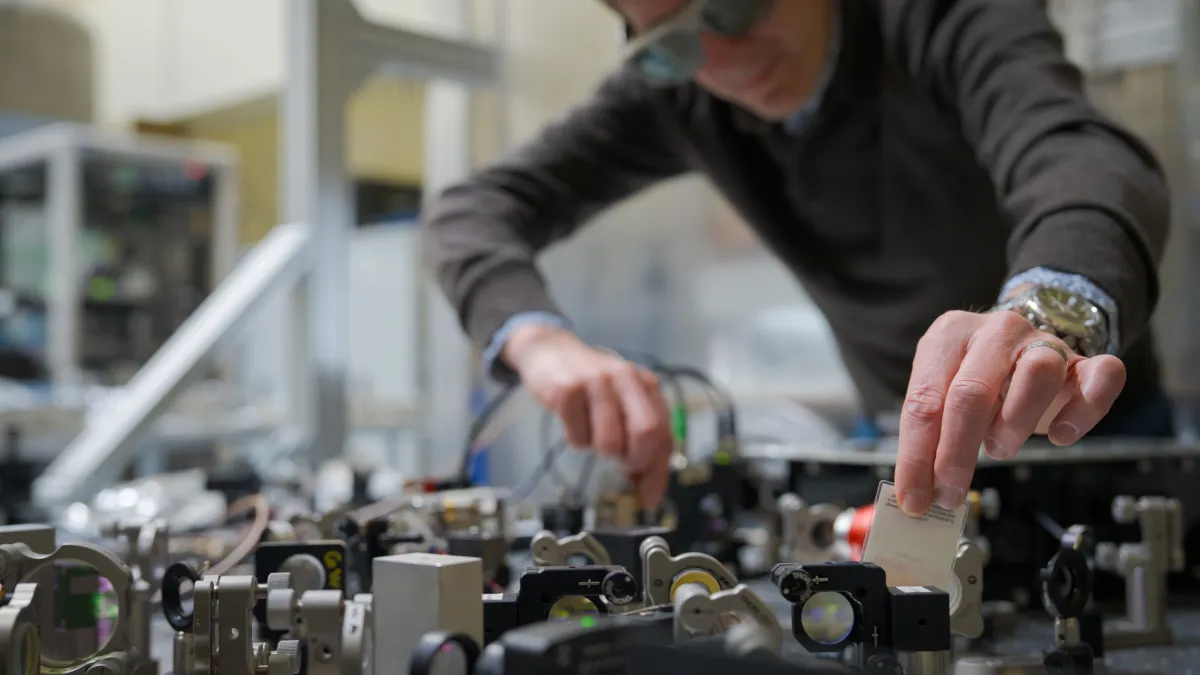Gravitational Wave Detection
Gravitational waves, predicted by Einstein, are ripples in the curvature of space-time which propagate at the speed of light. They are coming from the most violent events in the universe such as supernovae, coalescence of neutron stars and black hole collisions.
Gravitational waves, predicted by Einstein, are ripples in the curvature of space-time which propagate at the speed of light. They are coming from the most violent events in the universe such as supernovae, coalescence of neutron stars and black hole collisions.
At the Centre for Gravitational Astrophysics we have developed hardware and control systems which are installed in the Advanced Laser Interferometer Gravitational Wave Observatory (LIGO) detectors, located in the USA. These detectors are part of worldwide effort to detect gravitational waves.
LIGO has two observatories, 3000 km apart, each with identical laser interferometer detectors. The detectors have an L-shape, and light will travel along the 4 km arms. Mirrors at the end of the arms will reflect the light back, onto a photo detector, where the gravitational wave is detected. The mirrors are suspended to isolate them from the natural environment. This is because we want to detect a length change a hundred thousand times smaller then the diameter of a proton. To reach this level of sensitivity much research and development into ways to build the current and future instruments is needed.



